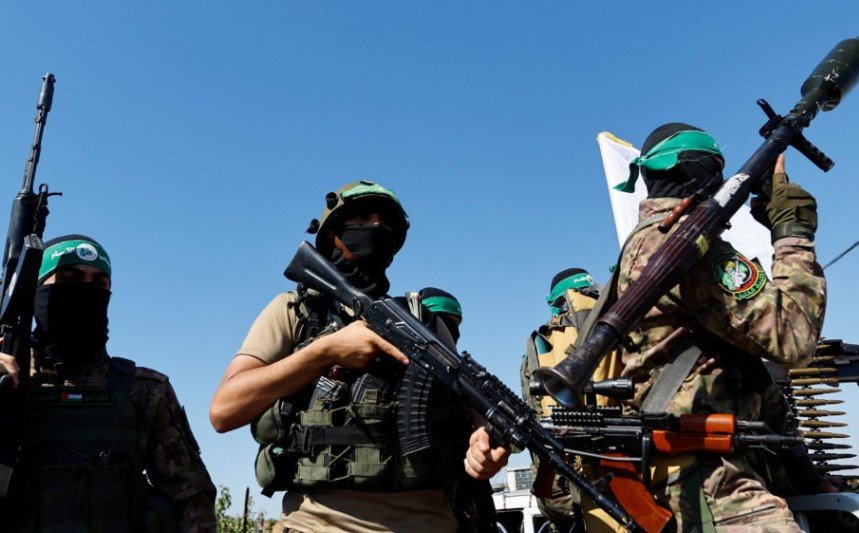A new armed group led by a former Palestinian Authority officer has set up a safe zone in southern Gaza, offering food, shelter, and protection from Hamas rule. Hossam al-Astal claims his militia gets support from Israel, drawing hundreds of desperate families amid ongoing conflict.
Rise of Strike Force Against Terror
Hossam al-Astal, a 50-year-old from Khan Younis, launched the Strike Force Against Terror in the empty village of Kizan al-Najjar. This spot sits south of Khan Younis, cleared out after months of heavy fighting between Israeli forces and Hamas.
He started the group to challenge Hamas control, which has lasted almost 20 years in Gaza. Al-Astal invites people tired of shortages and fear to join his base. Recent reports show dozens of families have already moved in, with more on the way.
His team runs security checks on newcomers to block any Hamas links. This setup aims to create a pocket of stability in a war-torn area.

Al-Astal shared in interviews that his group works with another clan-based force called Abu Shabab. Both claim they coordinate with Israel for supplies and gear.
Claims of Israeli and Western Backing
Al-Astal states openly that Israel provides food, water, power, and even weapons to his militia. This support helps attract people facing hunger and lack of basics in Gaza.
He mentioned plans to house 300 to 400 more people soon. Families contact him daily, seeking escape from Hamas oppression.
Reports from various sources suggest this fits a pattern. Other clan militias have popped up in areas Israel controls, filling gaps left by Hamas retreat.
Israel has not confirmed direct aid, but officials hint at backing local groups against Hamas. This could be a way to avoid full control of Gaza while weakening the terror group.
Western nations, including the US and EU, reportedly fund some anti-Hamas efforts through aid channels. Al-Astal hopes this leads to peace between Gazans and Israelis.
Daily Life in the Enclave
Inside the enclave, people get meals, electricity, and tents for shelter. This contrasts with the dire conditions elsewhere in Gaza, where over 1.9 million are displaced.
Al-Astal’s group promises freedom from Hamas taxes and rules. Residents say they feel safer here than in other parts of the Strip.
Recent updates show the militia expanding its reach. They plan to build more housing and boost security.
- Food distribution happens twice a day, with staples like rice, beans, and canned goods.
- Power comes from generators, providing light and charging for phones.
- Medical aid includes basic clinics for injuries and illnesses.
Families report better access to clean water, a big issue in war zones.
Broader Impact on Gaza Conflict
This militia emerges as Israel ramps up operations in Gaza City and other areas. Strikes have killed many, and ground troops push deeper to root out Hamas.
The group could signal a shift. With Israel unwilling to govern Gaza directly, local militias might take over civil tasks.
Experts see this as part of efforts to dismantle Hamas networks. Similar groups have formed in other spots, like near hospitals or refugee camps.
However, challenges remain. Hamas fighters still launch attacks, and not all Gazans trust these new forces.
| Key Developments in Gaza Militias | Details |
|---|---|
| Formation Date | Recent weeks in 2025 |
| Leader | Hossam al-Astal, ex-PA officer |
| Location | Kizan al-Najjar, south of Khan Younis |
| Claimed Support | Israel for arms, food, and power |
| Population Impact | Hundreds joining for aid |
| Affiliated Groups | Abu Shabab clan militia |
This table highlights the quick growth and ties of the new force.
Analysts note ties to past events, like Israeli advances in Khan Younis earlier this year. Those operations weakened Hamas hold, creating space for alternatives.
Peace talks stall, but local efforts like this might pave the way for change. Al-Astal calls for a better future without violence.
Challenges and Future Outlook
Skeptics worry these militias could spark clan rivalries or become new power grabs. Hamas has vowed to fight back against any challengers.
Al-Astal admits risks but pushes forward. He trains fighters to defend the enclave from attacks.
International observers watch closely. Aid groups report mixed feelings among Gazans, some hopeful, others cautious.
As conflict drags on into 2025, with over 40,000 reported deaths, these enclaves offer a glimmer of normal life. Yet, true stability needs broader agreements.
The situation ties into recent strikes on Hamas leaders abroad, raising tensions. Israel continues operations, aiming to end Hamas rule.
What do you think about this development in Gaza? Share your views in the comments and spread the word to keep the conversation going.
